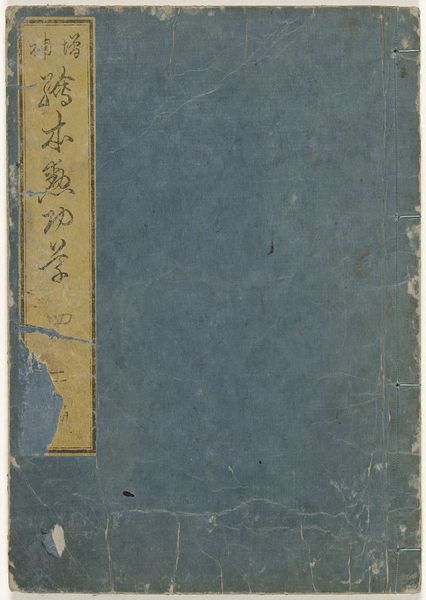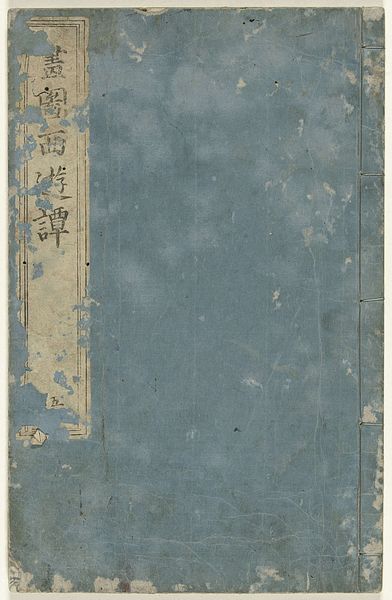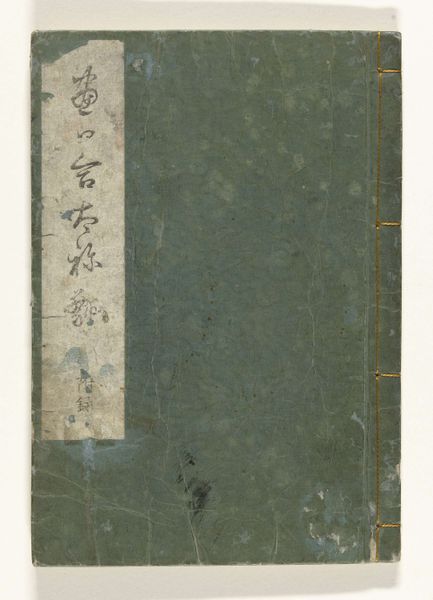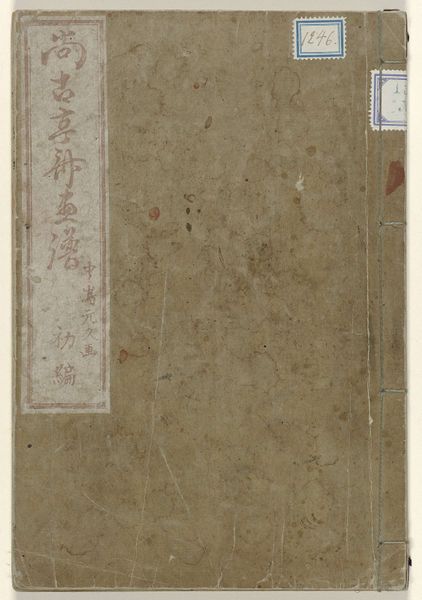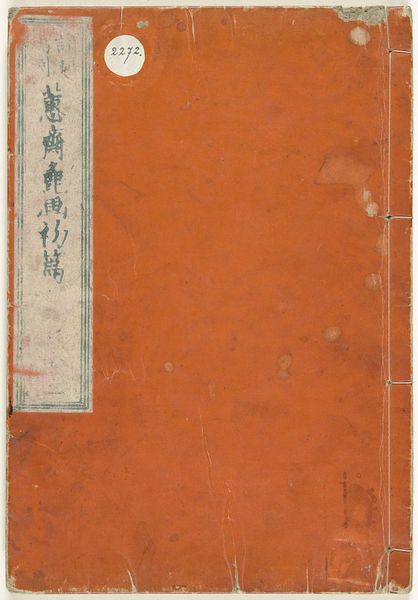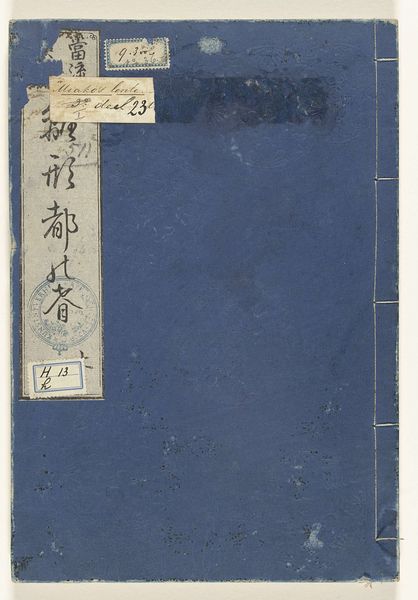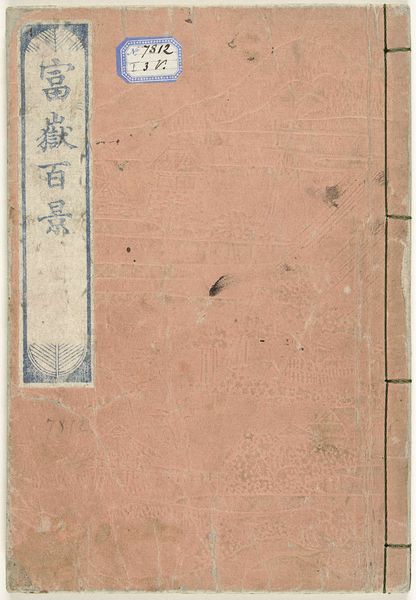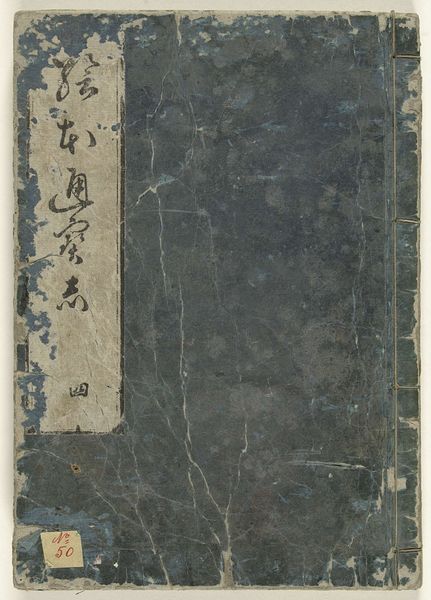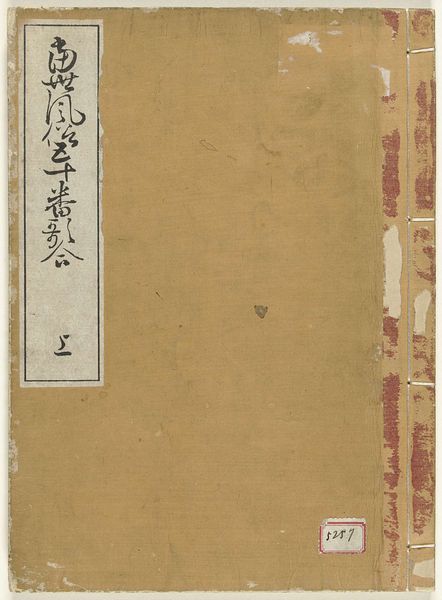
print, paper
#
water colours
# print
#
book
#
asian-art
#
paper
#
coloured pencil
Dimensions: height 270 mm, width 175 mm
Copyright: Rijks Museum: Open Domain
Editor: Here we have Shiba Kōkan's "Illustrated Account of a Journey to the West," printed around 1803, using paper, colored pencil, and water colors. The muted blue of the cover and the visible wear and tear give it such an intimate, historical feel. What do you see in this piece, particularly given its age and medium? Curator: Well, immediately, the damage tells a story. What narratives and symbols have persisted through generations to ensure this book's preservation? Consider the book itself as a powerful object, holding knowledge and cultural identity within its covers. The title refers to a pivotal narrative, "Journey to the West". Have you noticed how certain symbols resonate across cultures and time? Editor: That’s a fascinating point. It looks well-handled. What is significant about the book form itself as a vessel for these symbols and stories? Curator: Books carry immense cultural weight. In many societies, the written word embodies authority, wisdom, and continuity. The act of preserving this book indicates a collective desire to safeguard those qualities. Think of the tradition of illuminated manuscripts; each element held symbolic weight, intended to inspire or instruct. The same logic applies here, though the method has shifted to printing, widening the access. Who do you think would be the reader? Editor: Perhaps someone of means or a scholar, given the effort to produce it, though less exclusive due to the printing. So the book cover acts as the gate to enter that cultural knowledge. The symbols act like keys. Curator: Precisely! Its physical presence embodies both knowledge and cultural memory. And, sometimes, as an iconographer, I think the real art exists inside, in the stories and in how people change and use these. Editor: That gives me so much to consider, to appreciate both its physical and intangible significance! Thank you.
Comments
rijksmuseum about 2 years ago
⋮
Fascinated by European art the painter Shiba Kokan was a pioneer of Western-style painting and engraving. In 1787 he undertook a journey to the Dutch trading post on Dejima. He incorporated his observations and experiences in a book with illustrations of the interiors of the houses on the island. Here we see spittoons placed beside every chair.
Join the conversation
Join millions of artists and users on Artera today and experience the ultimate creative platform.
